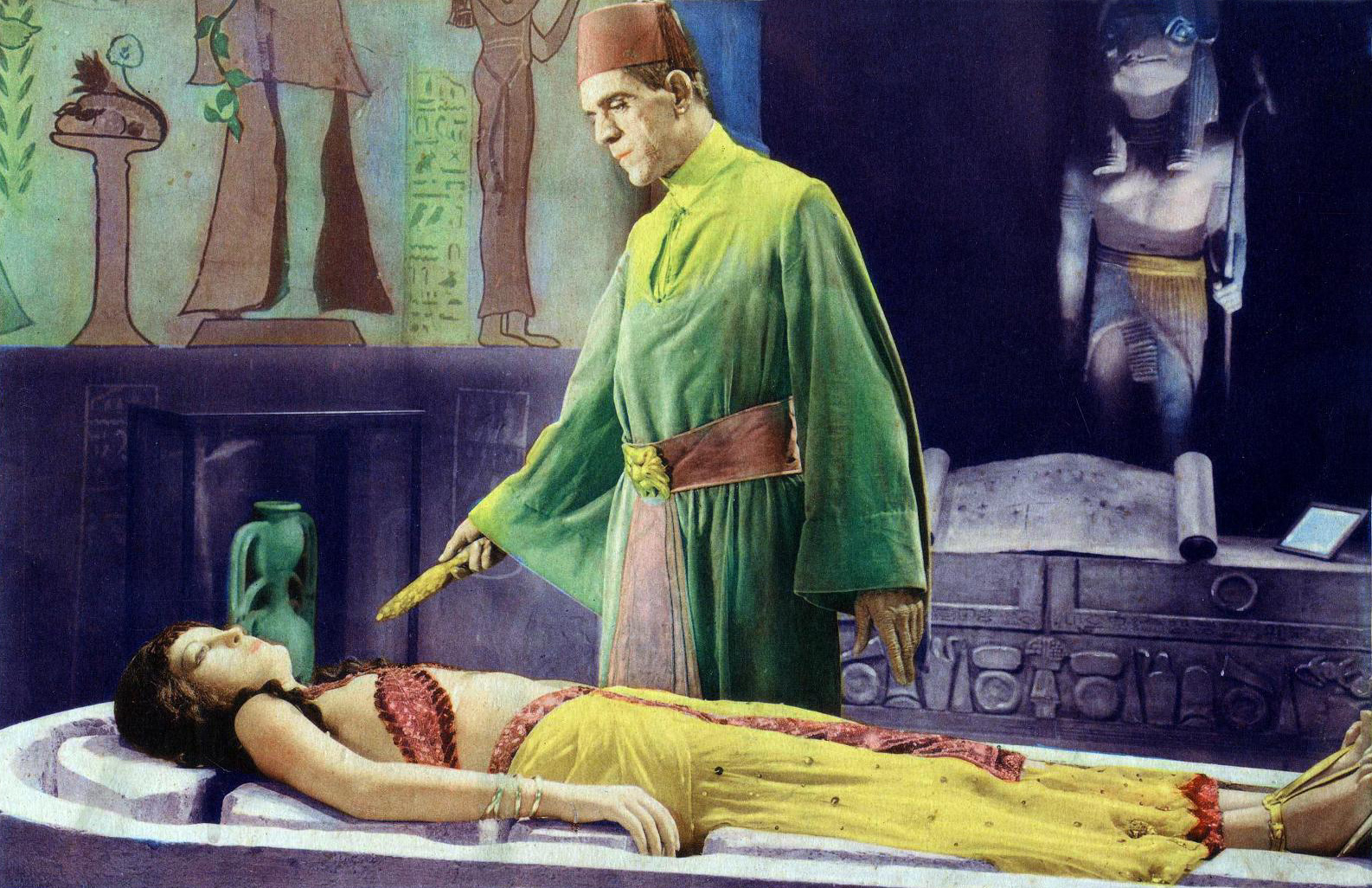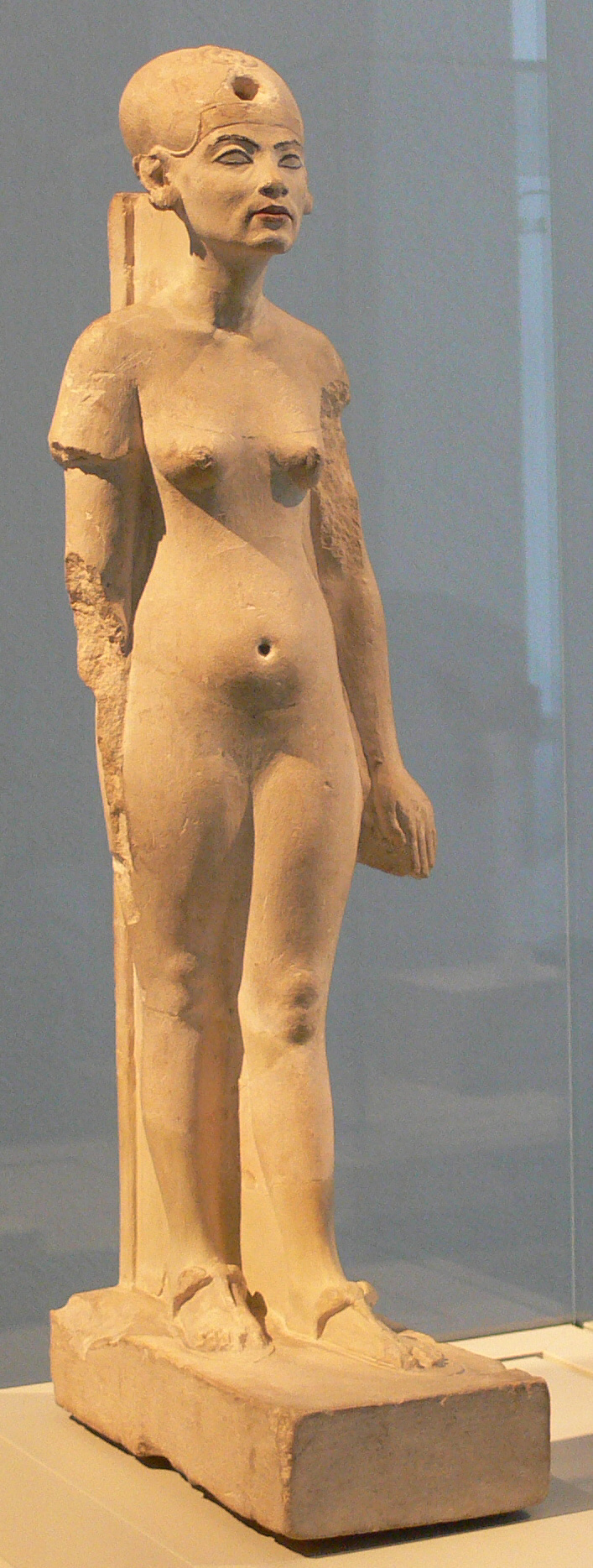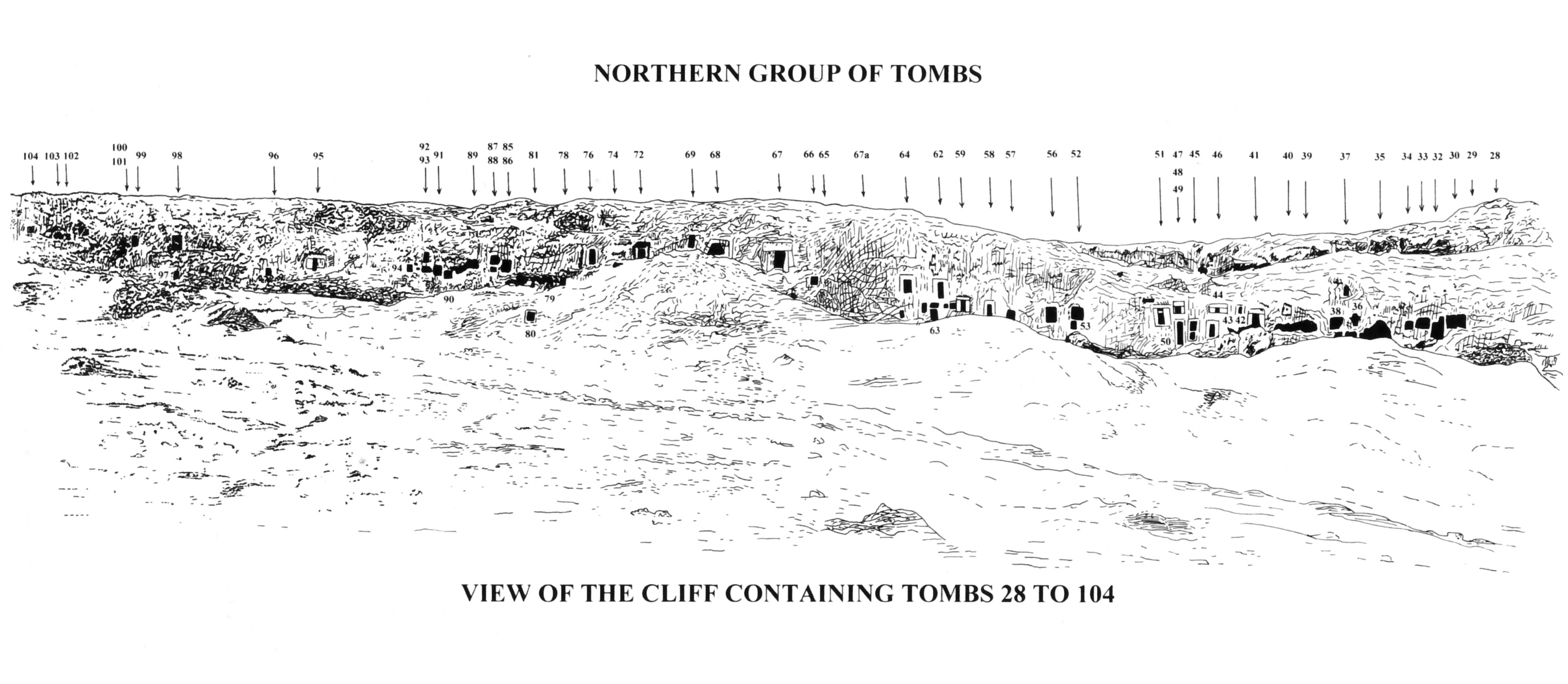|
Boundary Stelae Of Akhenaten
The Boundary Stelae of Akhenaten are a group of royal monuments in Upper Egypt. They are carved into the cliffs surrounding the area of Akhetaten, or the Horizon of Aten, which demarcates the limits of the site. The Pharaoh Akhenaten commissioned the construction of Akhetaten in year five of his reign during the New Kingdom. It served as a sacred space for the god Aten in an uninhabited location roughly halfway between Memphis and Thebes at today's Tell El-Amarna. The boundary stelae include the foundation decree of Akhetaten along with later additions to the text, which delineate the boundaries and describe the purpose of the site and its founding by the Pharaoh. Total of sixteen stelae have been discovered around the area. According to Barry Kemp, the Pharaoh Akhenaten did not “conceive of Akhetaten as a city, but as a tract of sacred land”. Discovery and publication Sixteen boundary stelae have so far been discovered at Tell El-Amarna. The French Jesuit Claude Sicard was ... [...More Info...] [...Related Items...] OR: [Wikipedia] [Google] [Baidu] |
Amarna Boundary Stela U 01
Amarna (; ar, العمارنة, al-ʿamārnah) is an extensive Egyptian archaeological site containing the remains of what was the capital city of the late Eighteenth Dynasty. The city was established in 1346 BC, built at the direction of the Pharaoh Akhenaten, and abandoned shortly after his death in 1332 BC. The name that the ancient Egyptians used for the city is transliterated in English as Akhetaten or Akhetaton, meaning " the horizon of the Aten".David (1998), p. 125 The site is on the east bank of the Nile River, in what today is the Egyptian province of Minya. It is about south of the city of al-Minya, south of the Egyptian capital, Cairo, and north of Luxor (site of the previous capital, Thebes). The city of Deir Mawas lies directly to its west. On the east side of Amarna there are several modern villages, the chief of which are l-Till in the north and el-Hagg Qandil in the south. Activity in the region flourished from the Amarna Period until the later Roman era. ... [...More Info...] [...Related Items...] OR: [Wikipedia] [Google] [Baidu] |
Nile
The Nile, , Bohairic , lg, Kiira , Nobiin language, Nobiin: Áman Dawū is a major north-flowing river in northeastern Africa. It flows into the Mediterranean Sea. The Nile is the longest river in Africa and has historically been considered the List of rivers by length, longest river in the world, though this has been contested by research suggesting that the Amazon River is slightly longer.Amazon Longer Than Nile River, Scientists Say Of the world's major rivers, the Nile is one of the smallest, as measured by annual flow in cubic metres of water. About long, its drainage basin covers eleven countries: the Democratic Republic of the Congo, Tanzania, Burundi, Rwanda, Uganda, Kenya, Ethiopia, Erit ... [...More Info...] [...Related Items...] OR: [Wikipedia] [Google] [Baidu] |
Ankhesenpaaten
Ankhesenamun (, "Her Life Is of Amun"; c. 1348 or c. 1342 – after 1322 BC) was a queen who lived during the 18th Dynasty of Egypt as the pharaoh Akhenaten's daughter and subsequently became the Great Royal Wife of pharaoh Tutankhamun. Born Ankhesenpaaten (, "she lives for the Aten"), she was the third of six known daughters of the Egyptian Pharaoh Akhenaten and his Great Royal Wife Nefertiti. She became the Great Royal Wife of Tutankhamun. The change in her name reflects the changes in ancient Egyptian religion during her lifetime after her father's death. Her youth is well documented in the ancient reliefs and paintings of the reign of her parents. The mummy of Tutankhamun's mother has been identified through DNA analysis as a full sister to his father, the unidentified mummy found in tomb KV55, and as a daughter of his grandfather, Amenhotep III. So far his mother's name is uncertain, but her mummy is known informally to scientists as the Younger Lady. Ankhesenamun was we ... [...More Info...] [...Related Items...] OR: [Wikipedia] [Google] [Baidu] |
Meketaten
Meketaten ("Behold the Aten" or "Protected by Aten") was the second daughter of six born to the Egyptian Pharaoh Akhenaten and his Great Royal Wife Nefertiti. She likely lived between Year 4 and Year 14 of Akhenaten's reign. Although little is known about her, she is frequently depicted with her sisters accompanying her royal parents in the first two-thirds of the Amarna Period. Biography Meketaten was born approximately in Year 4 of Akhenaten's reign to that pharaoh and his Great Royal Wife, Nefertiti.Tyldesley, Joyce. Nefertiti: Egypt's Sun Queen. Penguin. 1998. She had an elder sister, Meritaten, and four younger sisters: Ankhesenpaaten, Neferneferuaten Tasherit, Neferneferure and Setepenre. Tutankhaten was likely a full or half-brother through their father. Her birth year is estimated based on the dates of inscriptions that reference her. The first known depiction of Meketaten is on the walls of the ''Hwt-benben'' temple in Thebes, which is dedicated to her mother Neferti ... [...More Info...] [...Related Items...] OR: [Wikipedia] [Google] [Baidu] |
Meritaten
Meritaten, also spelled Merytaten, Meritaton or Meryetaten ( egy, mrii.t-itn) (14th century BC), was an ancient Egyptian royal woman of the Eighteenth Dynasty of Egypt. Her name means "She who is beloved of Aten"; Aten being the sun-deity whom her father, Pharaoh Akhenaten, worshipped. She held several titles, performing official roles for her father and becoming the Great Royal Wife to Pharaoh Smenkhkare, who may have been a brother or son of Akhenaten. Meritaten also may have served as pharaoh in her own right under the name Ankhkheperure Neferneferuaten.J. Tyldesley, ''Chronicle of the Queens of Egypt'', 2006, Thames & Hudson, pg 136–137 Family Meritaten was the first of six daughters born to Pharaoh Akhenaten and his Great Royal Wife, Nefertiti. Her sisters are Meketaten, Ankhesenpaaten, Neferneferuaten Tasherit, Neferneferure, and Setepenre. Meritaten is mentioned in diplomatic letters, by the name ''Mayati''. She is mentioned in a letter from Abimilki of Tyre. The r ... [...More Info...] [...Related Items...] OR: [Wikipedia] [Google] [Baidu] |
Atenism
Atenism, the Aten religion, the Amarna religion, or the "Amarna heresy" was a religion and the religious changes associated with the ancient Egyptian Eighteenth Dynasty pharaoh Akhenaten. The religion centered on the cult of the god Aten, depicted as the disc of the Sun and originally an aspect of the traditional solar deity Ra. In the 14th century BC, Atenism was Egypt's state religion for about 20 years, before subsequent rulers returned to the traditional polytheistic religion and the pharaohs associated with Atenism were erased from Egyptian records. History of Aten before Akhenaten The word ''Aten'' ( egy, jtn), meaning "circle," "disc," and later "sun disc," is first found in the 24th century BC Abusir Papyri, discovered in the mortuary temple of the Fifth Dynasty pharaoh Neferirkare Kakai. Aten, the god of Atenism, first appears as a god in texts dating to the Twelfth Dynasty, in the '' Story of Sinuhe''. During the Middle Kingdom, Aten "as the sun disk... ... [...More Info...] [...Related Items...] OR: [Wikipedia] [Google] [Baidu] |
Season Of The Inundation
The Season of the Inundation or Flood ( egy, Ꜣḫt) was the first season of the lunar and civil Egyptian calendars. It fell after the intercalary month of Days over the Year ('). and before the Season of the Emergence ('). In the modern Coptic Calendar, this season lasts from Paoni 12 to Paopi 9. Names The pronunciation of the ancient Egyptian name for the Season of the Inundation is uncertain as the hieroglyphs do not record its vowels. It is conventionally transliterated Akhet. The name refers to the annual flooding of the Nile. Lunar calendar In the lunar calendar, the intercalary month was added as needed to maintain the heliacal rising of Sirius in the fourth month of the season of the Harvest. This meant that the Season of the Inundation usually lasted from September to January. Because the precise timing of the flood varied, the months of "Inundation" no longer precisely reflected the state of the river but the season was usually the time of the annual floo ... [...More Info...] [...Related Items...] OR: [Wikipedia] [Google] [Baidu] |
Nefertiti
Neferneferuaten Nefertiti () ( – c. 1330 BC) was a queen of the 18th Dynasty of Ancient Egypt, the great royal wife of Pharaoh Akhenaten. Nefertiti and her husband were known for a radical change in national religious policy, in which they promoted a form of proto- monotheism centred on the sun god Aten. With her husband, she reigned at what was arguably the wealthiest period of ancient Egyptian history. Some scholars believe that Nefertiti ruled briefly as Neferneferuaten after her husband's death and before the ascension of Tutankhamun, although this identification is Neferneferuaten#Nefertiti, a matter of ongoing debate.Dodson, Aidan, Amarna Sunset: ''Nefertiti, Tutankhamun, Ay, Horemheb, and the Egyptian Counter-Reformation''. The American University in Cairo Press. 2009, . If Nefertiti did rule as Pharaoh, her reign was marked by the fall of Amarna and relocation of the capital back to the traditional city of Thebes, Egypt, Thebes. She was made famous by Nefe ... [...More Info...] [...Related Items...] OR: [Wikipedia] [Google] [Baidu] |
Season Of The Emergence
The Season of the Emergence ( egy, Prt) was the second season of the lunar and civil Egyptian calendars. It fell after the Season of the Inundation (') and before the Season of the Harvest ('). In the modern Coptic calendar, the season falls between Paopi 10 and Tobi 10. Names The pronunciation of the Ancient Egyptian name for the Season of the Emergence is uncertain as the hieroglyphs do not record its vowels. It is conventionally transliterated Peret or Proyet. The name refers to the emergence of the fertile land beside the Nile from its annual flood and to the growth of vegetation and crops over the following season. It is also known as Winter. Lunar calendar In the lunar calendar, the intercalary month was added as needed to maintain the heliacal rising of Sirius in the fourth month of the Season of the Harvest. This meant that the Season of the Emergence usually lasted from January to May. Because the precise timing of the flood varied, the months of "Emergence" ... [...More Info...] [...Related Items...] OR: [Wikipedia] [Google] [Baidu] |
Ancient Records Of Egypt
''Ancient Records of Egypt'' is a five-volume work by James Henry Breasted, published in 1906, in which the author has attempted to translate and publish ''all'' of the ancient written records of Egyptian history which had survived to the time of his work at the start of the twentieth century. (Breasted notes that his work covers only ancient “historical documents”, and generally does not include ancient Egyptian literature, religious writings, or texts on science, mathematics, or medicine.) * Volume I, ''The First to the Seventeenth Dynasties'' * Volume II, ''The Eighteenth Dynasty'' * Volume III, ''The Nineteenth Dynasty'' * Volume IV, ''The Twentieth to the Twenty-Sixth Dynasties'' * Volume V, ''Indices'' It was part of a proposed three-part set of translations of original texts by different authors, which at the time were difficult to find: * History of Egypt (five volumes) * History of Assyria (two volumes) * History of Mesopotamia Mesopotamia ' ... [...More Info...] [...Related Items...] OR: [Wikipedia] [Google] [Baidu] |
James Henry Breasted
James Henry Breasted (; August 27, 1865 – December 2, 1935) was an American archaeologist, Egyptologist, and historian. After completing his PhD at the University of Berlin in 1894, he joined the faculty of the University of Chicago. In 1901 he became director of the Haskell Oriental Museum at the university, where he continued to concentrate on Egypt. In 1905 Breasted was promoted to full professor, and held the first chair in Egyptology and Oriental History in the United States. In 1919 he founded the Oriental Institute at the University of Chicago, a center for interdisciplinary study of ancient civilizations. Breasted was a committed field researcher, and had a productive interest in recording and interpreting ancient writings, especially from sources and structures that he feared may be lost forever. Early life and education James Henry Breasted was born on August 27, 1865, the son of a small hardware business owner and his wife, in Rockford, Illinois. His ancestors wen ... [...More Info...] [...Related Items...] OR: [Wikipedia] [Google] [Baidu] |
Norman De Garis Davies
The Egyptologists Nina M. Davies (6 January 1881 – 21 April 1965) and Norman de Garis Davies (1865–5 November 1941) were a married couple of illustrators and copyists who worked in the early and mid-twentieth century drawing and recording paintings in Egypt. Their work was often published together, as N. de Garis Davies, and so it is usually difficult to determine who drew which illustration. Early life and adulthood Nina Nina M. Davies was born Anna Macpherson Cummings in Salonika, Greece, the eldest of three daughters of Cecil J. Cummings, but returned to Scotland with the death of her father in 1894. Her parents were of English and Scottish ancestry. Nina was schooled in England and showed considerable promise as an artist in her youth, with her family moving to London for her training. She was on a vacation in Alexandria, Egypt in 1906 when she met Norman de Garis Davies. They married in Hampstead, London on 8 October 1907 and settled near the Theban Necropolis and began d ... [...More Info...] [...Related Items...] OR: [Wikipedia] [Google] [Baidu] |



_(Musée_du_Caire)_(2076972086).jpg)


